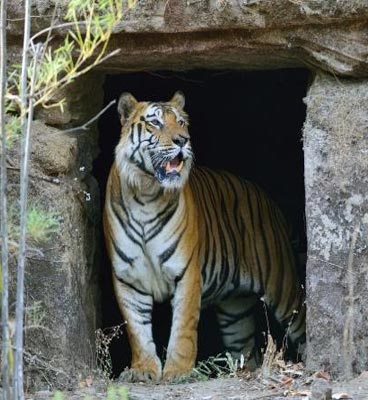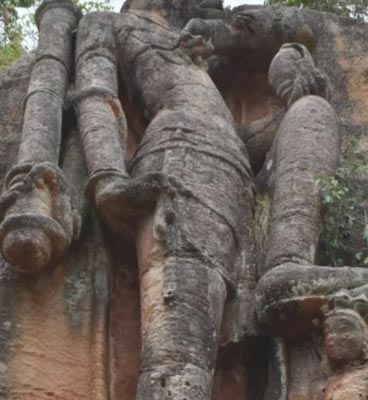Bandhavgarh National Park is well known for the Evergreen Sal forest and Mixed forest, around 515 species of flora and about 242 species of birds accompanied with several species of insects and reptiles. The majestic mammals of Bandhavgarh are the Royal Bengal Tigers. Other commonly sighted wild animals include Leopard, Wild dog, Wild cat, Hyena, Wolf, Chital, Sambar, Black Buck, Rojda etc. You can experience this wide horizon of fauna by Bandhavgarh Online Safari Booking.
Bandhavgarh is also popular for its rich historical significance. The mention of Bandhavgarh can be traced in the ancient books of the ‘Narad Pancharatra’ and the ‘Shiva Purana’, which implies that this place has been in existence since the period of Ramayana.
The Bandhavgarh Fort is an exemplary masterpiece and is believed to be from ‘Treta Yuga’. The fort witnessed the reign of significant dynasties of the Kalachuris, the Sengars and the Baghels.
Bandhavgarh has also been the site of archeological excavations.


ASI unravelled Buddhist Caves in Bandhavgarh Forests on September 2022
The Archaeological Survey of India (ASI) successfully processed phenomenal discoveries of ancient remains in the Bandhavgarh Tiger Reserve in Madhya Pradesh. The exploration enclosed 26 caves, 26 temples, 2 votive stupas, 2 monasteries, 24 inscriptions, 19 water structures, 46 sculptures and other scattered remains in the Tiger Reserve.
These discoveries are estimated from various historical periods and cover the eras of the noted rulers Maharaja Pothasiri, Maharaja Bhattadeva and Shri Bhimsena. The excavation process was carried out under the supervision of Shivakant Bajpai, the superintendent archeologist of ASI’s Jabalpur circle. The exploration process underwent for a few months in the areas of Bandhavgarh Tiger Reserve, covering almost 170 sq km. The ASI team successfully discovered the following –
• 26 Buddhist Caves estimated to be of 2nd - 5th centuries BCE, belonging to the Mahayana sect of Buddhism. Chaitya (rounded) doors and stone beds were found in the caves that were used by Mahayana followers.
• 24 inscriptions in Brahmi text from 2nd-5th centuries mentioned sites of Mathura, Pavata, Kaushambi, Sapatanaairikaa and Vejabharada.
• The remains of 26 temples pertaining to the Kalachuri period (9th-11th centuries) and the world’s largest Varaha sculpture from the same era were found.
• The Varaha sculpture is among the monolithic sculptures of Lord Vishnu’s 10 incarnations.
• 2 Saiva monasteries have also been discovered.
• Remains of the Gupta period have been found. The door jambs and cave carvings are the evidence.
2,000-year-old Relics of ‘Modern Society’ Unearthed in MP’s Bandhavgarh Tiger Reserve on May 2023
ASI unearthed several archeological treasures throughout its survey, which started from April 1, 2023. The excavation surfaced several pieces of evidence of modern society that existed almost 1500 - 2000 years ago. Almost 1500 years old paintings, man-made water bodies and other treasures have been unearthed. According to the ASI experts, these findings suggest that the present day tiger reserve was once part of an old trade route. Remains of rock-cut caves have been found that were supposedly the shelters for the travelling traders.
The man-made water bodies were built at a height to collect rainwater, which indicates the modernized thought of the settlement. The exploration took place in the zone in the Tala region.

